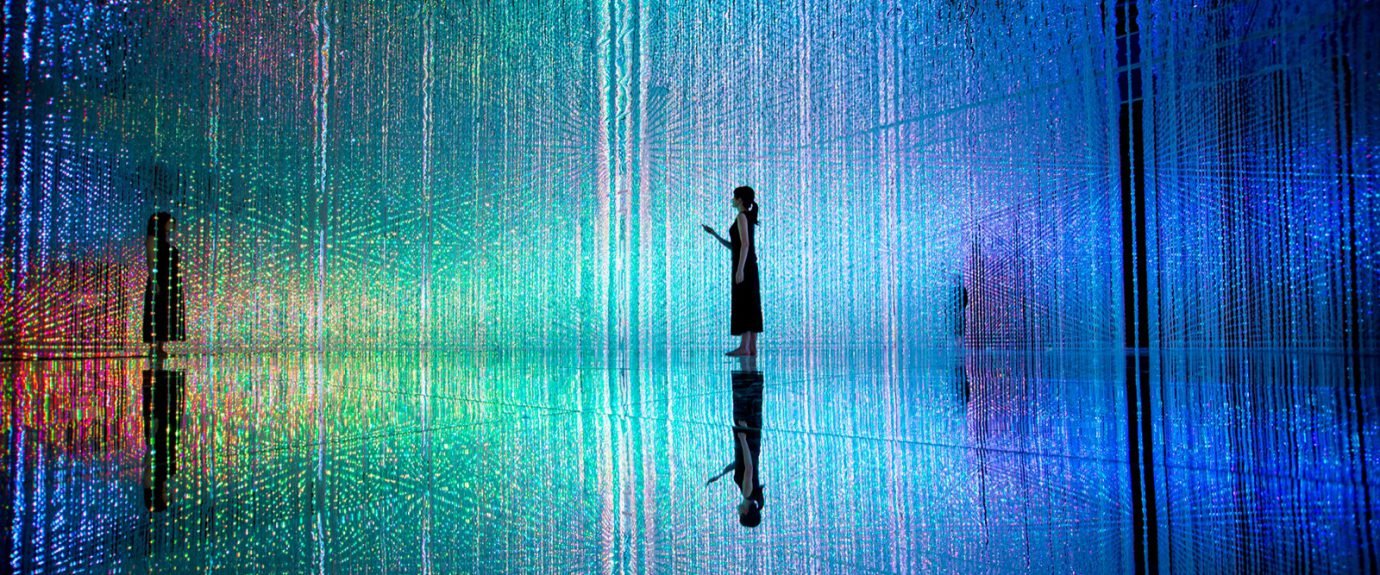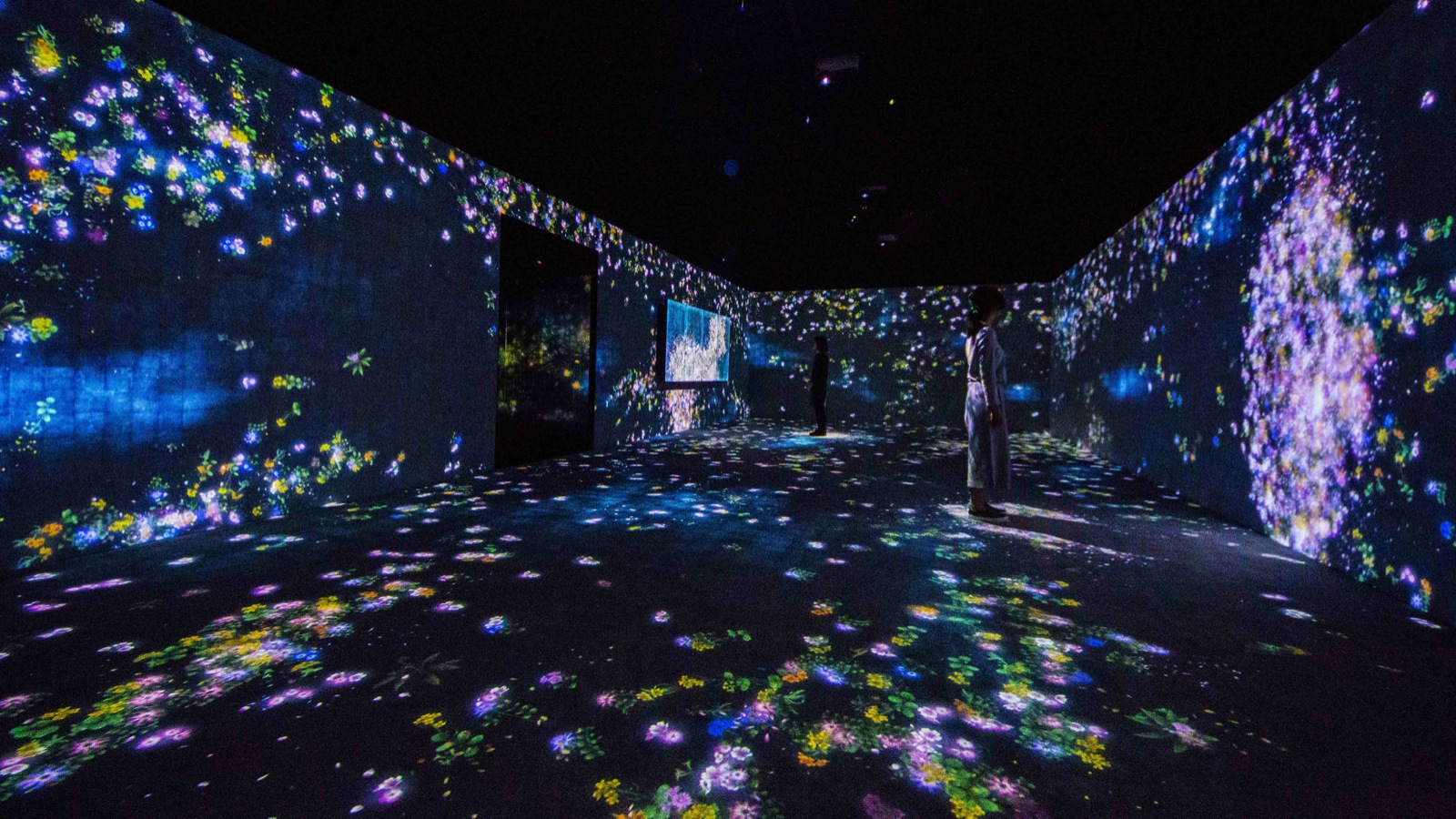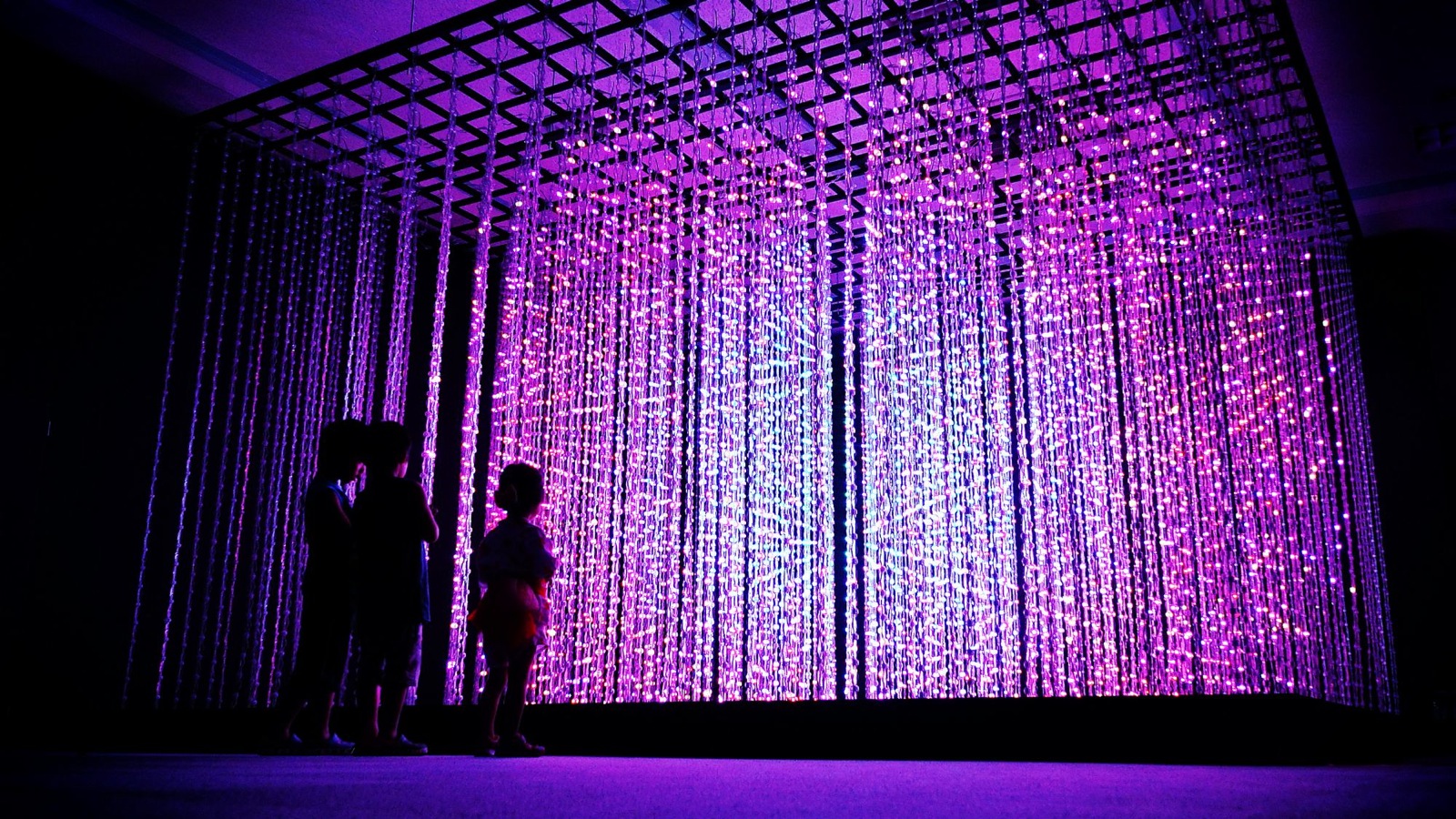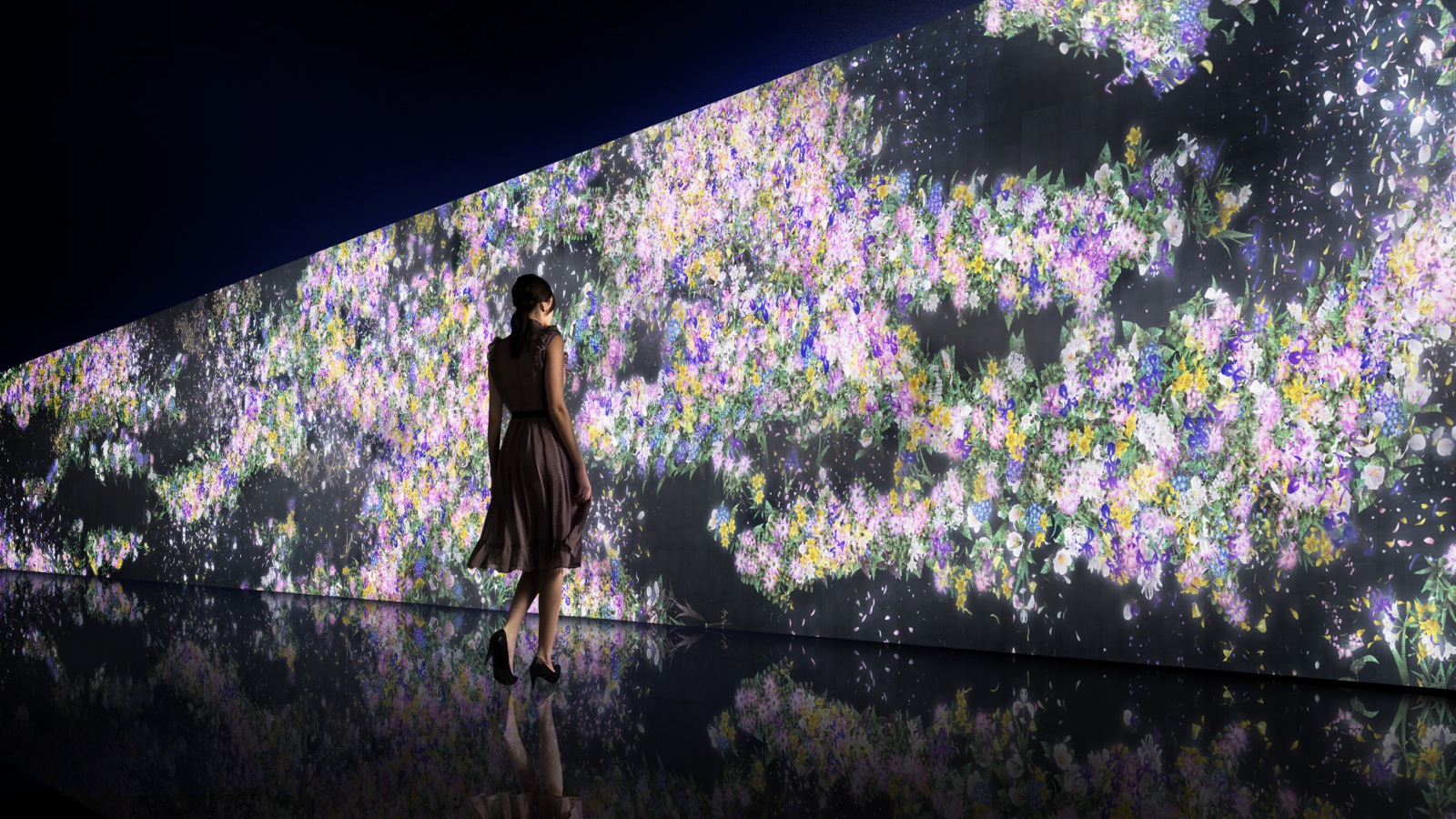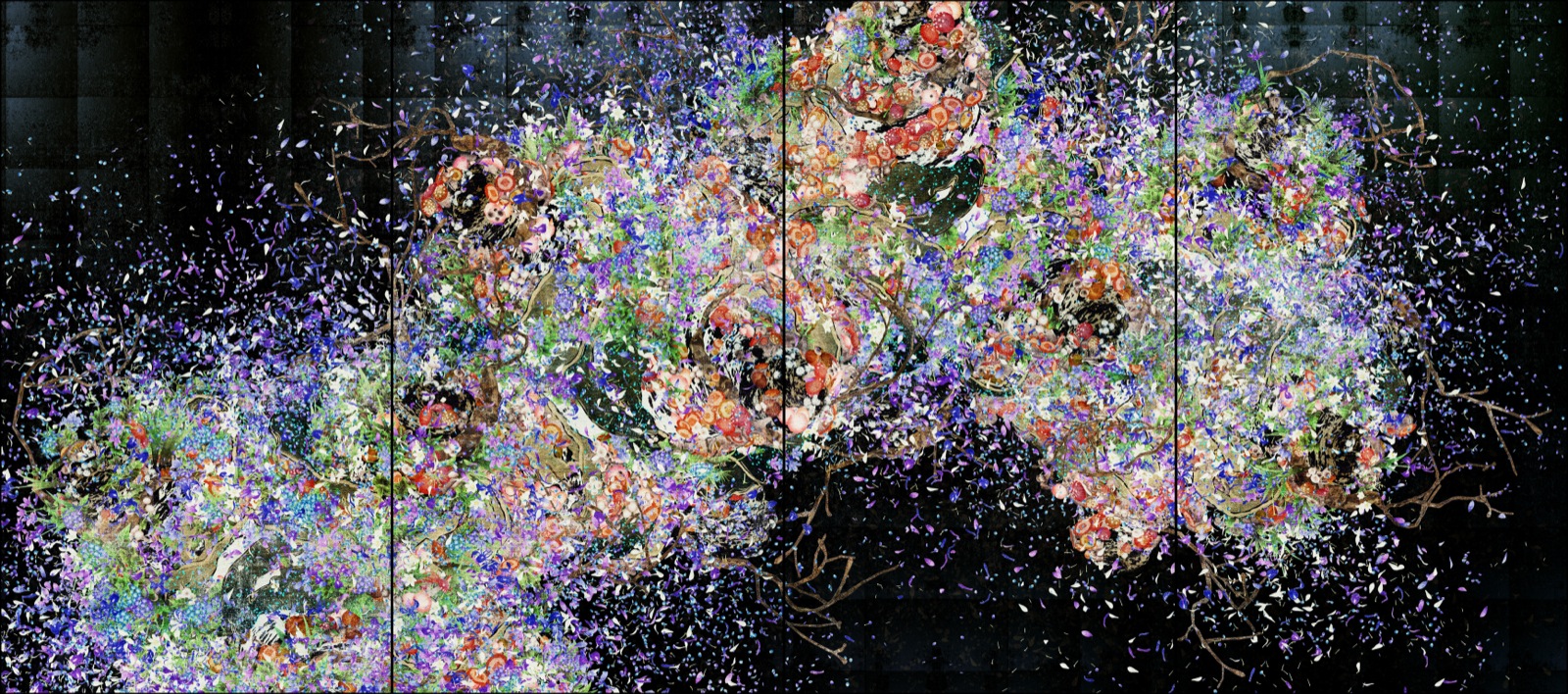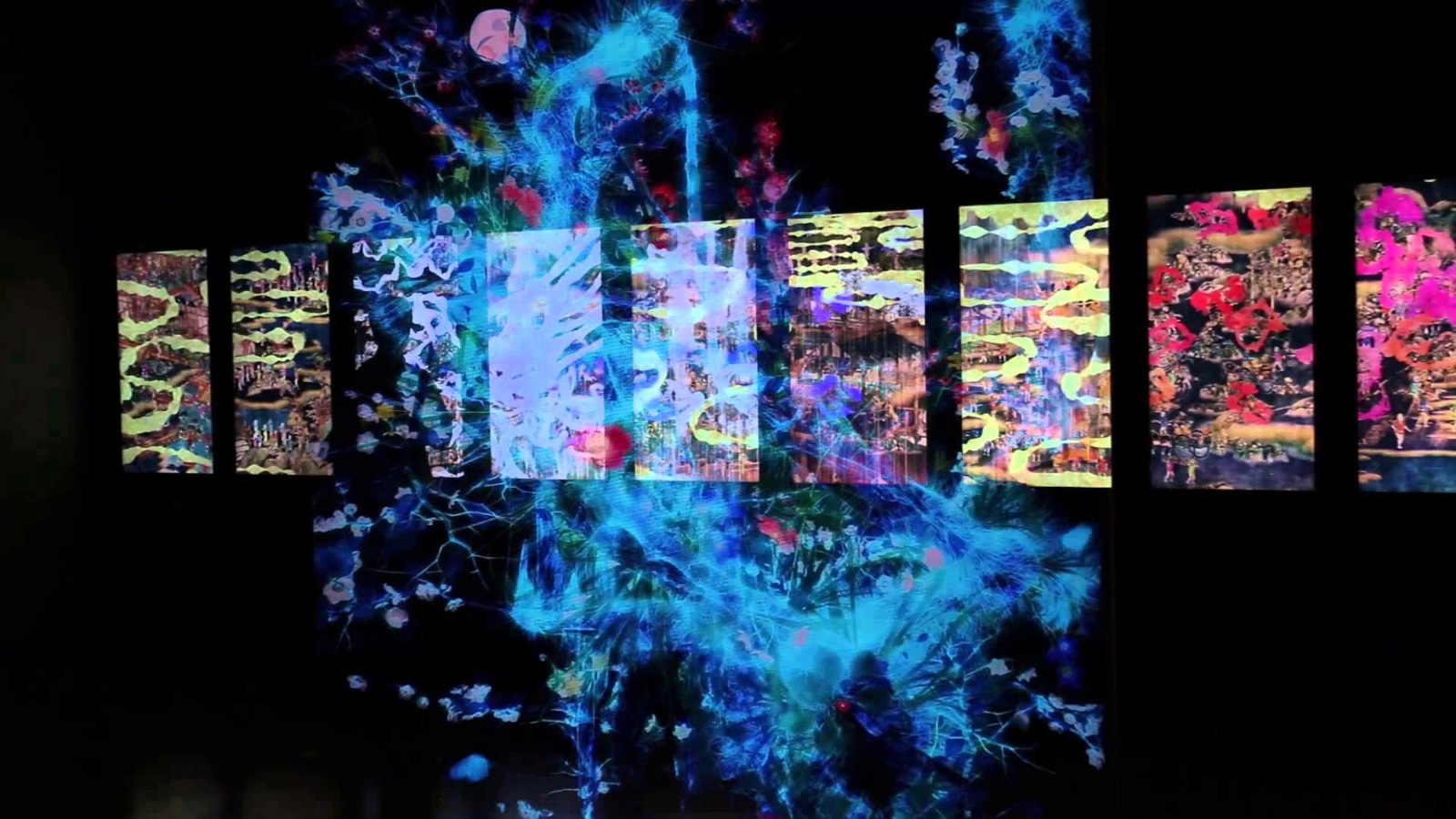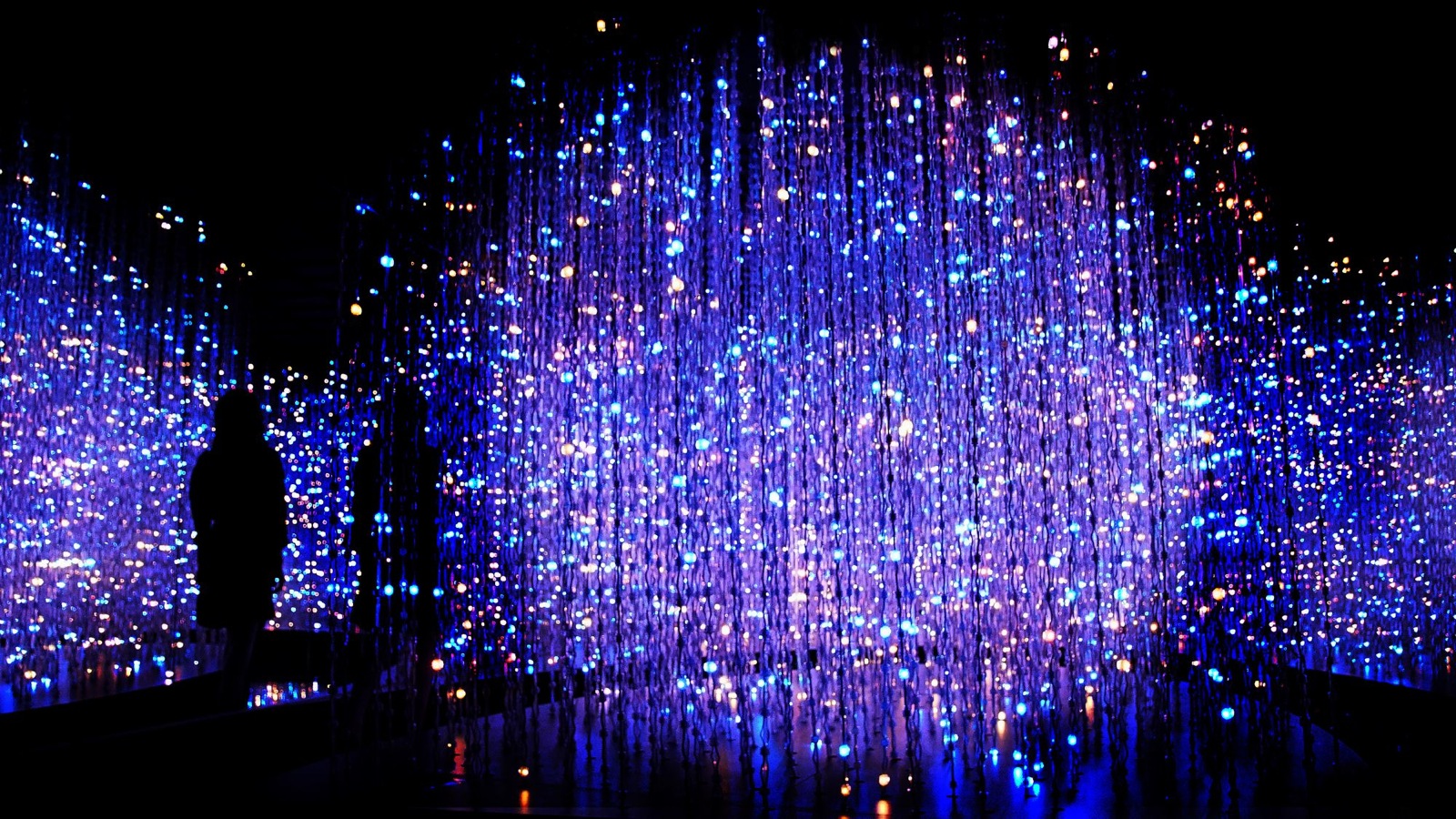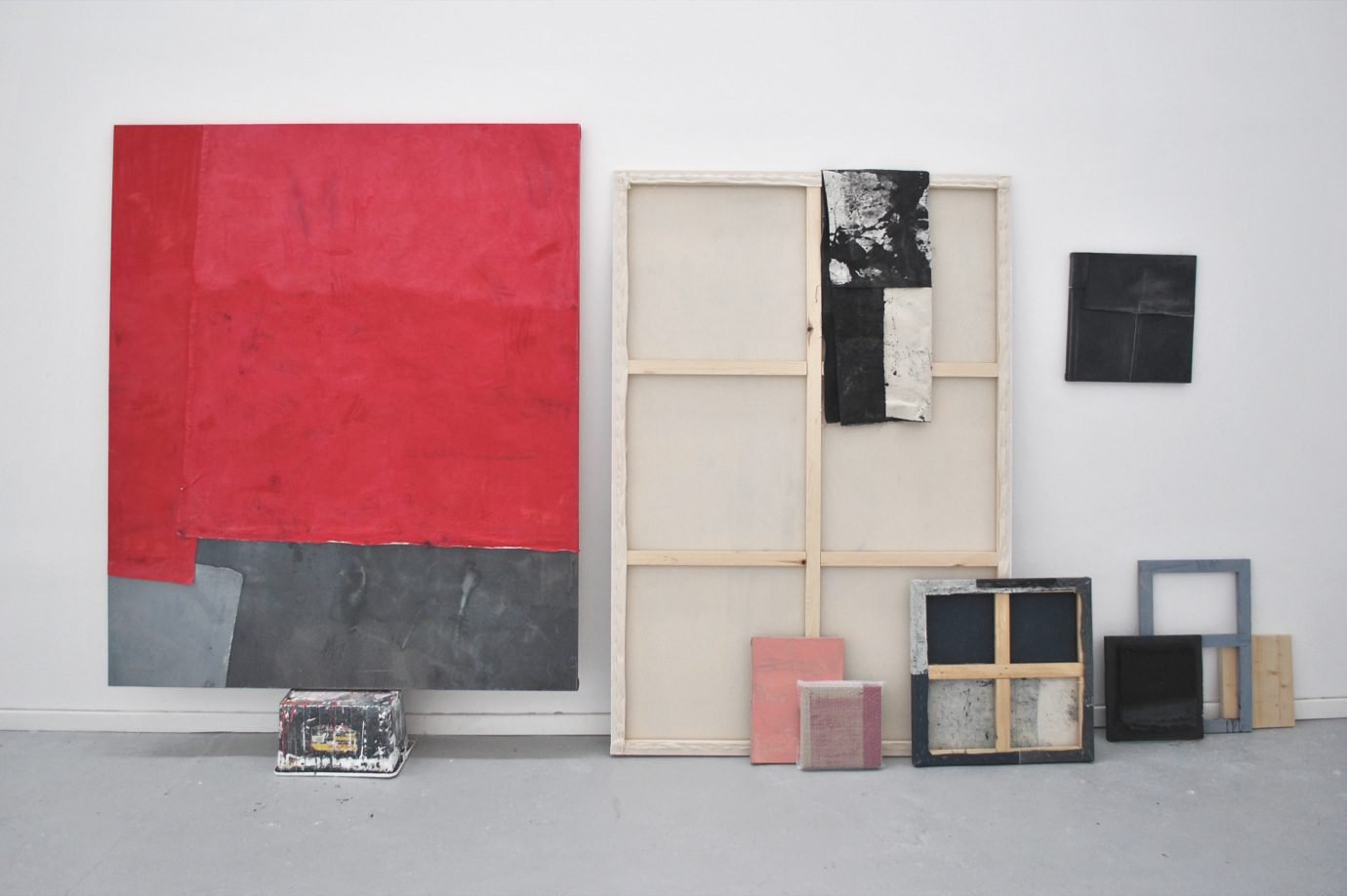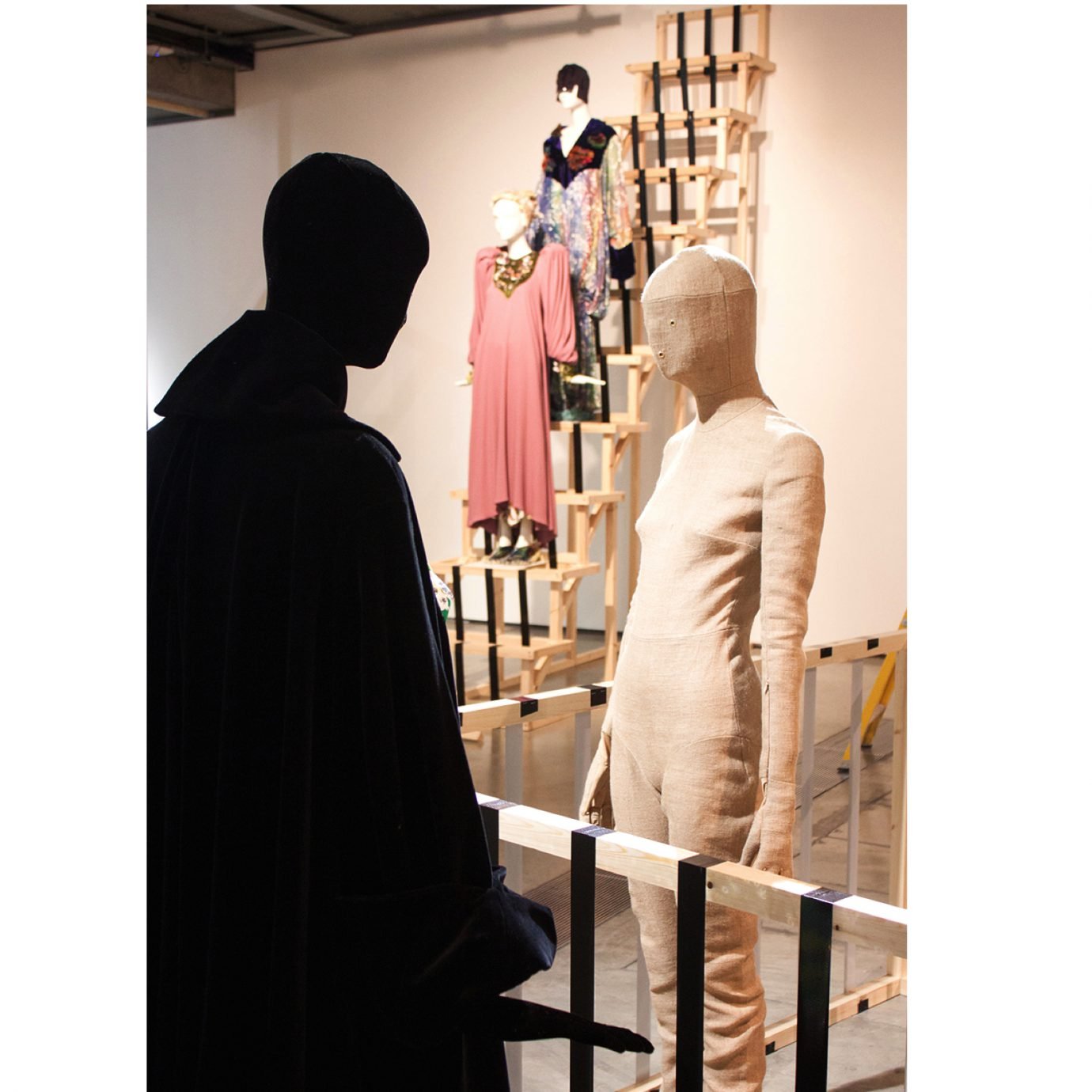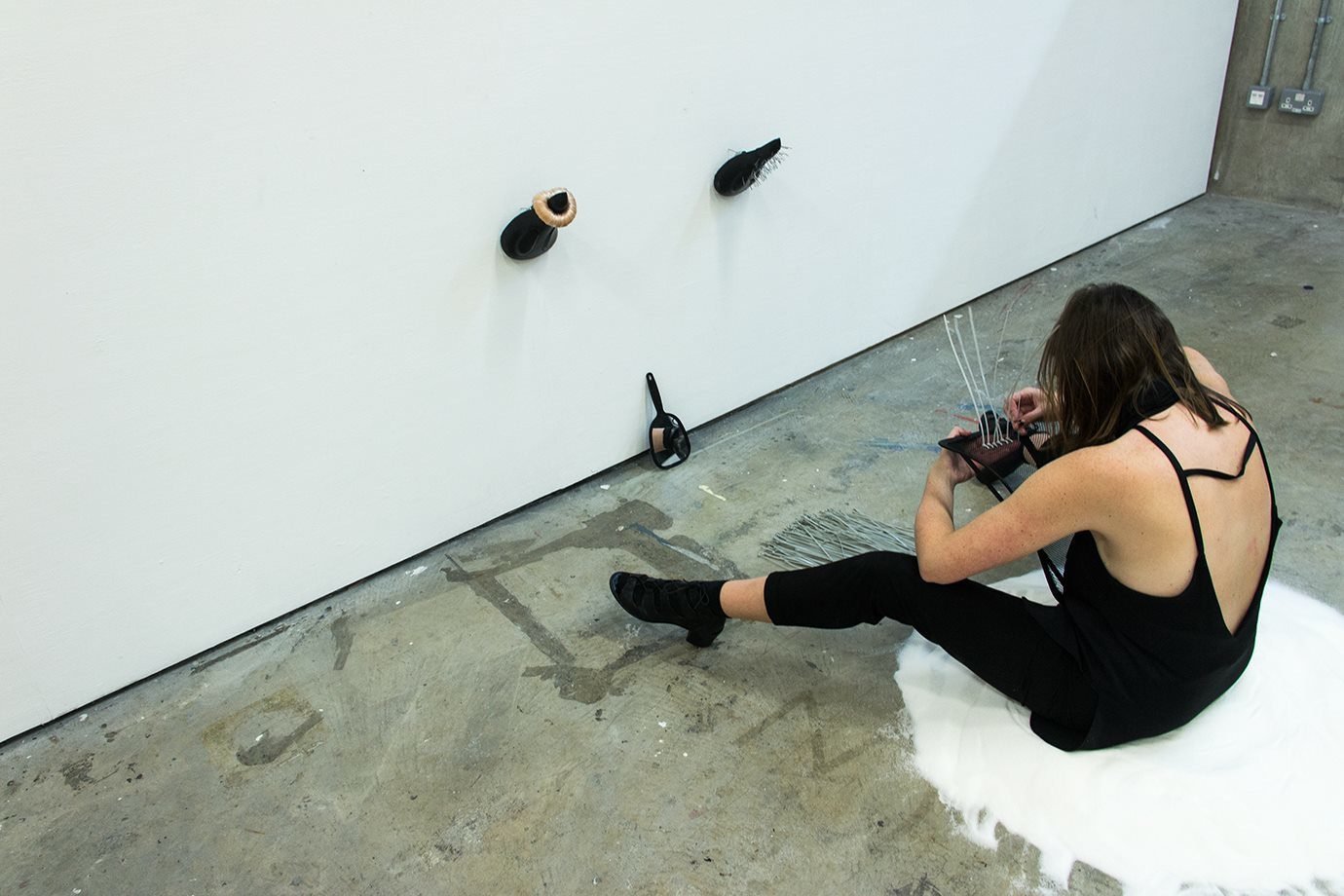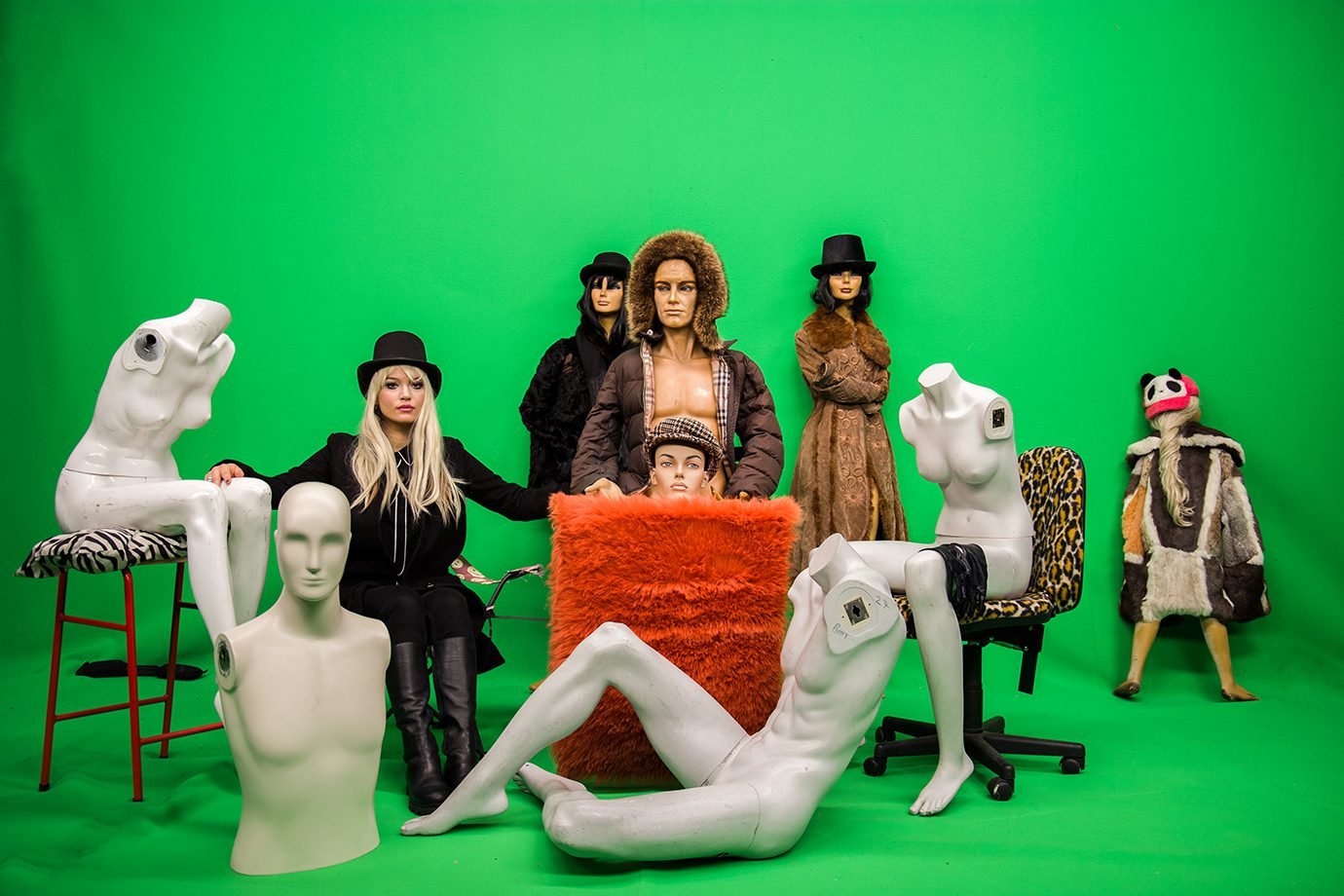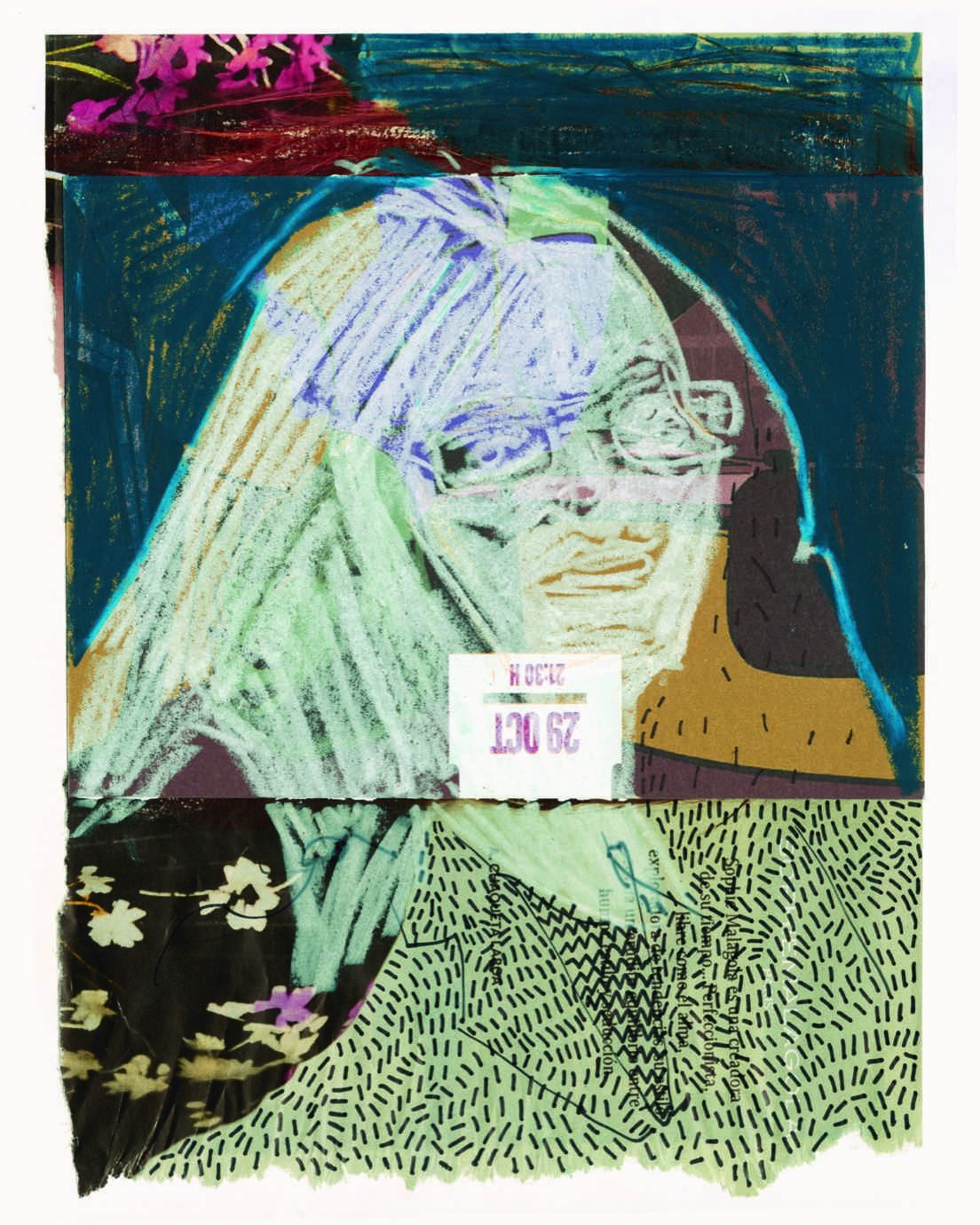“THE DIGITAL REALM, FREE FROM PHYSICAL CONSTRAINTS, ALLOWS FOR UNLIMITED POSSIBILITIES OF EXPRESSION AND TRANSFORMATION.”
What curatorial decisions were taken when developing your Pace London show?
teamLab believes that the digital domain can expand art. We are exploring new relationships between people and art through a new digital language.“Transcending Boundaries” has been one of our key concepts. For this exhibition, we intended to extend this concept and transcend boundaries not only between artworks and viewers, but also between artworks, uniting a group of individual pieces into one immersive experience.
This is a very challenging experiment technically and conceptually – by collaborating with Pace, a new possibility for trying has been opened, one that occurs more positively and is capable of more experimentation, not just for works of art, but for the way that art spaces exist, for the approach of the viewer, and even for the art market. By using the digital, we think that new art can not just expand art itself, but also change the way that space is treated in a museum or gallery, the way that people value art, and also the way that the art market exists.
Is this why you call yourselves “ultra-technologists”?
We try to extend ourselves beyond technology. Technology is our medium through which we express ourselves, but we aim to achieve results that go above and beyond technology. That is why we are a collective of artists, CG animators, architects, mathematicians, software and hardware engineers, so that we can expand and create something new through the medium of technology.
In the age of computer-based art, how do you see your work in relation to traditional gallery space and context?
The digital realm, free from physical constraints, allows for unlimited possibilities of expression and transformation. Digital technology is a tool for change and a platform to express complex ideas and details. Viewers and the environment take on a crucial role in defining and changing interactive artworks. The viewer is an active participant and ultimately becomes a part of the artwork. The boundaries between artwork and viewer become ambiguous. Unlike a viewer who stands in front of a conventional painting, a viewer immersed in an interactive artwork is more aware of other people’s presence. Interactive digital art changes the relationships between people within it and the relationship between people and art. In short, we are exploring the way that changes the relationship between people through art.
In addition, we seek to diffuse the boundary between self and the world as well as between self and others, which we call “Body Immersive”. Also, as we named [this exhibition] “Transcending Boundaries”, we explore to lose the boundaries between works. In other words, we are seeking to eliminate the concept of boundary. Eventually, we would like to release human from substances.

